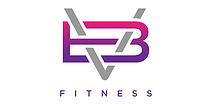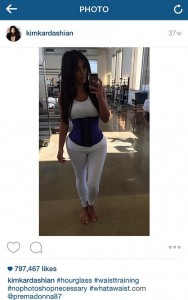There’s no shortage of advice on what exercises you should be doing to get your ‘pre-baby body’ back. Problem is, not all of it’s good advice.
First off, I hate the ‘get your pre-baby body back’ thing. It is not a race to see who can shift their pregnancy weight fastest, and it encourages mums to throw themselves into exercise and dieting to do so. Not healthy.
And whilst it’s fine (not vain) to want to change how you look, you shouldn’t have to feel ashamed of your post-baby body. You need to take it slowly and be gentle on yourself, take time out and be a little selfish (except it’s not really selfish- happy mum means happy baby).
But back to the advice itself.
The Good.
Let’s start with some exercises you CAN do. I’m going to link to someone else’s website here, so you don’t have to just take my word for it!
Marianne Ryan is a top Womem’s Health Physio, and I’ve shared this blog of hers with clients before, to reiterate what we’ve talked about in the session. It includes safe, effective exercises, that I use with personal training clients and in Restore My Core.
Good advice is about how to connect to your deep core. Training the breath and pelvic floor. Click here for Marianne’s advice on how to get a flat tummy.
The Bad.
Here’s a blog with ‘4 Moves to Target Your Mummy Tummy.’
However it’s more like 4 exercises to make your mummy tummy worse!
While this article does say to check with your GP if you have diastasis recti, it’s misleading in saying these exercises are how you should get a flat tummy post partum.
I’m not saying never do planks or crunches (although crunches would never be my exercise of choice to get a flat belly, postnatal or not), but you have to go through a progressive restorative programme first.
Any exercise that creates a lot of abdominal pressure, like these, runs a big risk of pushing your tummy out, not giving you a flat stable core. For example, the strain of the double leg lifts could lead to the low back arching, or pushing it into the ground to compensate, both of which put the pelvis in a non-optimal position for the transverse abdoninis and pelvic floor muscles. And the rectus abdominis and obliques can end up taking over, placing strain on a weakened linea alba.
Bad advice involves ab exercises, feeling the burn and anything that leaves you straining while you train.
The Ugly.
This one is actually part ugly, part good. But then I wouldn’t have had a nifty blog title, so I just went with ugly.
The first link mentioned girdles, and I want to talk about that some more. Are they a good idea postpartum?
Waist training has been in the news a lot recently, in large part thanks to the Kardashians making social media posts like this:
And because this was after giving birth (although over a year later), women can see it as a good way to get their tummy down. But wearing a supportive garment after having a baby is completely different to waist training, so please don’t confuse the two.
To start with I wouldn’t recommend this type of waist training. If you squeeze your tummy in like that, where do you think all your organs are going? Where is the pressure going?
Up or down is where. And pressure down on your pelvic floor is not a good idea, ever. Especially not when postnatal. It is going to put you at huge risk of pelvic organ prolapse.
And pressure up on the diaphragm? Hiatus hernia anyone?
On top of which you will actually be preventing your core from functioning properly. Here’s a video from Women’s Health Physio Julie Weibe that explains this beautifully.
But a supportive belt postpartum is different. They provide support spread around the torso, rather than just squeezing one area. This can give extra support to weakened abdominal muscles, reduce postnatal swelling, and encourage them to close back together whilst regaining tension.
Because it isn’t just the gap between the muscles that’s the issue. It’s the ability to create tension along the linea alba, which is the tissue in that gap. And if you close the gap without restoring function, your core still won’t be able to do it’s job properly, and any symptoms you may be having, like pelvic girdle pain, low back pain, or incontinence, will likely remain. You need to relearn how to use the deep core muscles and address your alignment.
If you do have abdominal separation and are considering a belt, I really recommend you see a Women’s Health Physio first. They can make sure the belt is fitted correctly and address any underlying issues with a tailored programme.
You can be referred by your GP, or you can find one to see privately here, just make sure you pick Women’s Health from the drop down menu.
Anyone local to me, I recommend www.beckyastonphysiotherapy.co.uk, having seen her myself.
I hope this article helps give you a bit more confidence in being able to distinguish between the fitness advice that’s worth following, and that which is best ignored. And as a mum, I trust you’re pretty good at listening to bad advice, nodding along, then going along on your way whilst ignoring it completely!






Leave a Reply
Want to join the discussion?Feel free to contribute!